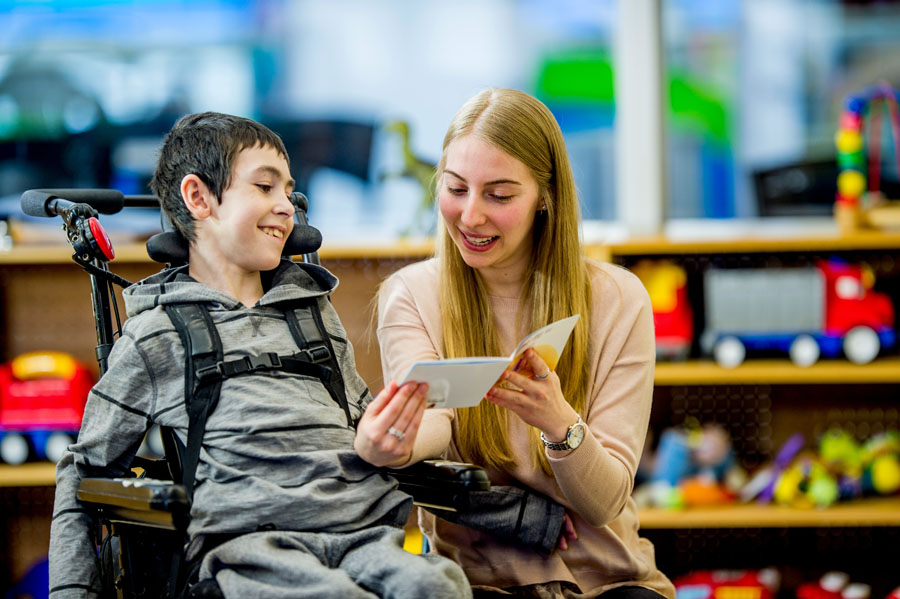
Goal
Advance understanding of typical and atypical child development in contemporary cohorts, with an emphasis on identifying sensitive time periods when prevention and treatment strategies will have the greatest impact. Improve the transition from adolescent to adult health care, especially for adolescents with disabilities or chronic health conditions.
CREDIT: CRIBS FOR KIDS®
Goal
Advance understanding of typical and atypical child development in contemporary cohorts, with an emphasis on identifying sensitive time periods when prevention and treatment strategies will have the greatest impact. Improve the transition from adolescent to adult health care, especially for adolescents with disabilities or chronic health conditions.

CREDIT: CRIBS FOR KIDS®
Research Opportunities
NICHD will continue to lead the scientific exploration of typical child development, with an emphasis on specific biological, social, environmental, and other factors that contribute to health and disease. This scientific focus aims to understand the developmental impact of diet and nutrition, the microbiome, physical activity, sleep, adverse childhood events, and early and/or prolonged exposure to technology and digital media. The timing of these exposures and the opportunity to either prevent or mitigate poor outcomes will be a primary focus across childhood and adolescence. Moreover, identifying optimal time periods for intervention after critical illness or traumatic injury or in the context of intellectual, developmental, and physical disability promises to yield new approaches to understanding plasticity and promoting functional adaptation. Throughout this work, there will be a continued focus on social determinants of health and the impact of health disparities on intervention efforts across development. The institute also aims to better understand the developmental changes that occur during puberty and how these changes affect both adolescent health and longer term outcomes. Finally, NICHD will lead efforts to improve the transition of adolescents to adult healthcare providers, especially for those with chronic conditions or illnesses, disabilities, or childhood exposures that require special consideration, such as exposure to trauma or violence. Improving this transition and exploring methods to improve health literacy, enable self-management, and encourage adherence to existing treatments among adolescents, as well as ways to enhance adult provider knowledge of pediatric conditions, will be accomplished through research efforts at NICHD and in coordination with collaborating institutes that specialize in specific diseases or conditions.


Scientific Priorities to Advance Public Health
- Continue to identify risk-reduction strategies that address infant mortality domestically and globally, as well as efforts to understand the root causes of sudden infant death syndrome and sudden unexpected infant death.
- Determine in typically developing children how exposures to social and environmental factors, such as diet and nutrition, technology and digital media use, sleep habits, physical activity, and infectious agents, affect neurodevelopment, neuroplasticity, and health outcomes. Include efforts to understand how the timing of these exposures influences development and health using advanced methods in population research.
- Assess and explore prevention and treatment strategies to address the leading causes of trauma and injury in children and adolescents, including violence, maltreatment, accidental injury, self-injurious behavior, and motor vehicle accidents. Develop critical care and rehabilitation pathways to optimize recovery for children who experience critical illness and/or traumatic injury.
- Characterize typical and atypical physical, social, and emotional development in adolescence to enable the identification of sensitive periods for establishing and reinforcing health-related behaviors, optimizing the timing of interventions, and preventing the adverse effects of traumatic exposure son psychosocial outcomes, high-risk behaviors, disease, or disability.
- Improve the transition to adult healthcare for young adults, especially for those with chronic conditions; those with intellectual, developmental, or physical disabilities; and those who have experienced injury or trauma. Develop measures that may help determine successful transition, at the individual, provider, or system level, to improve care for adolescents.

 BACK TO TOP
BACK TO TOP